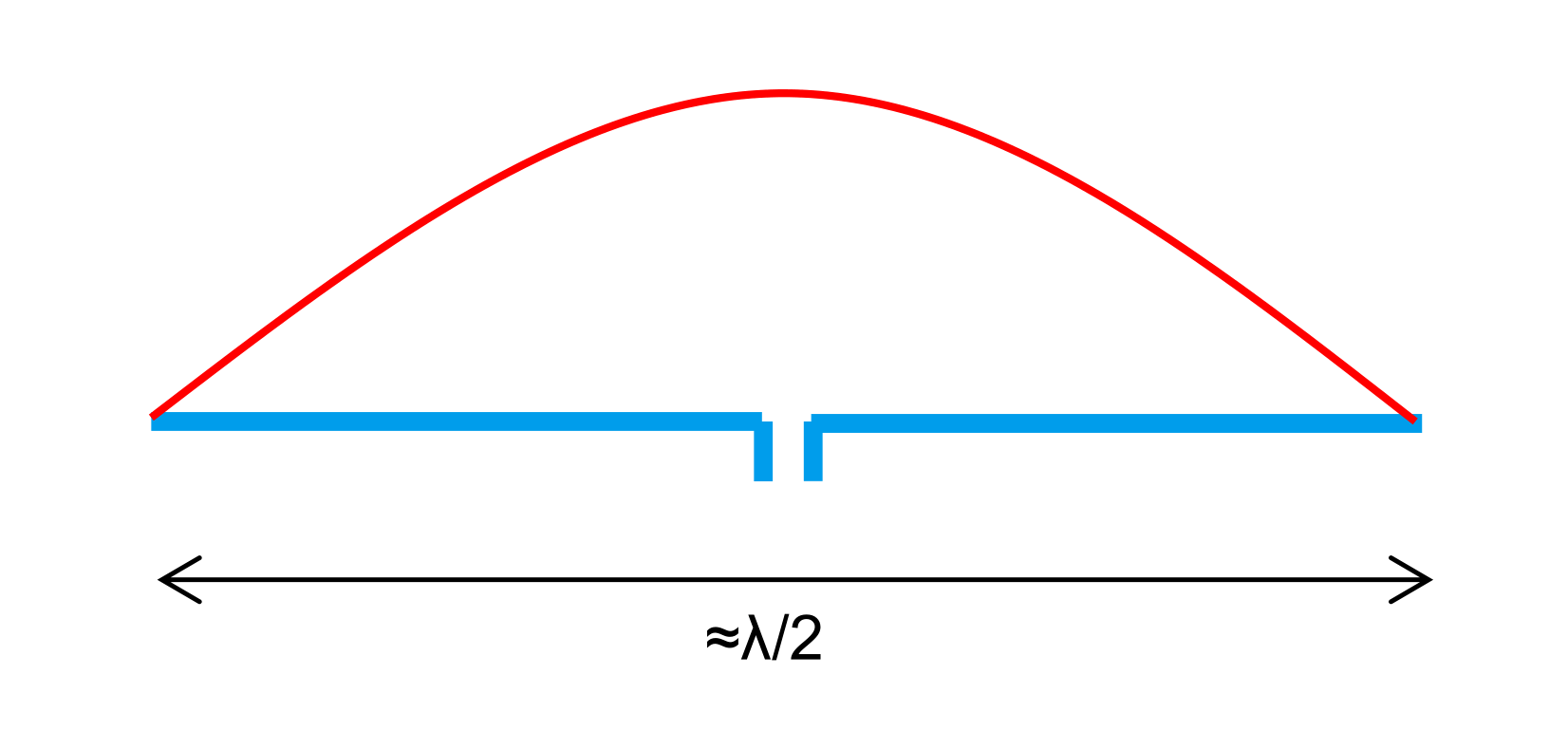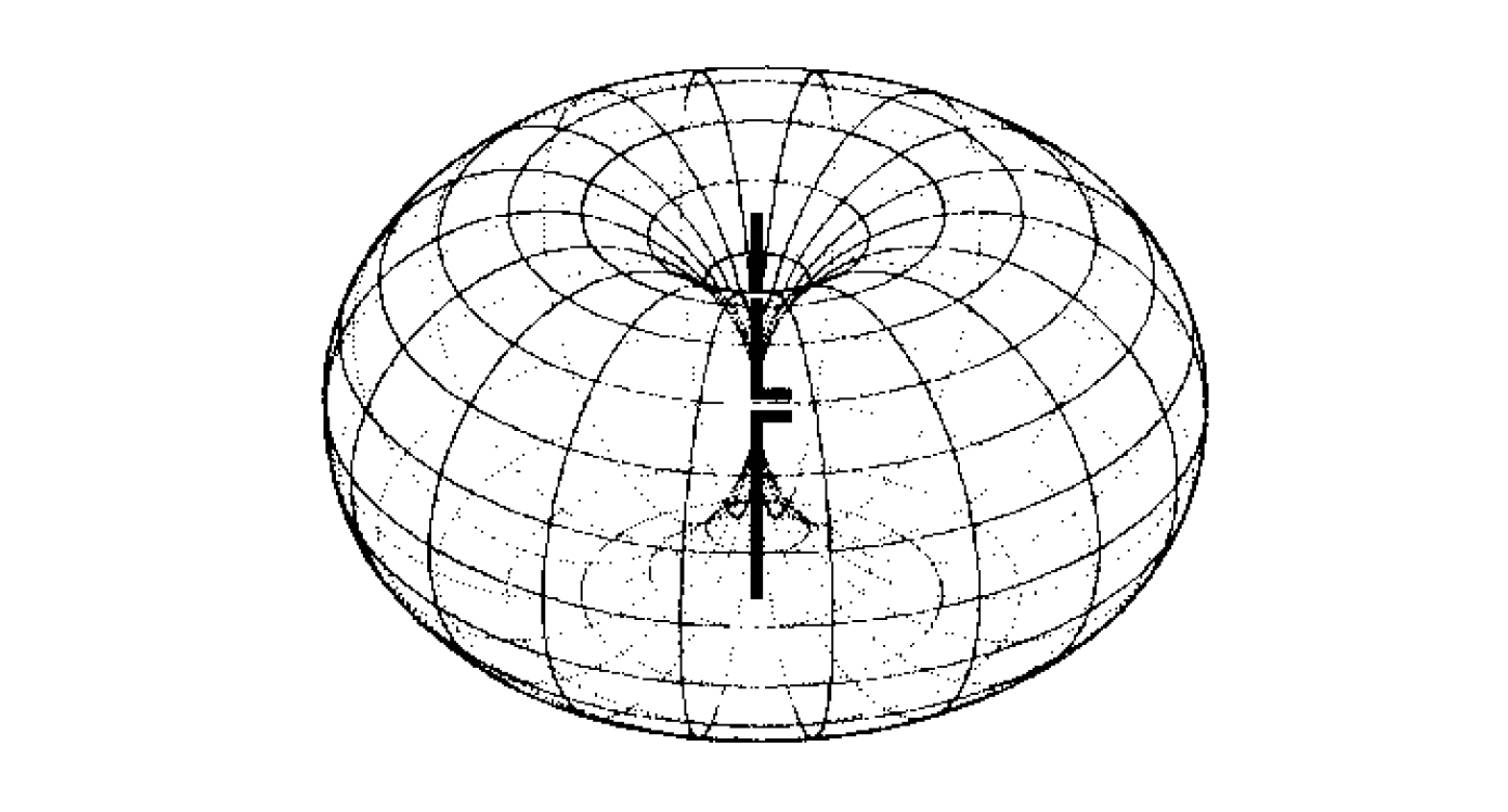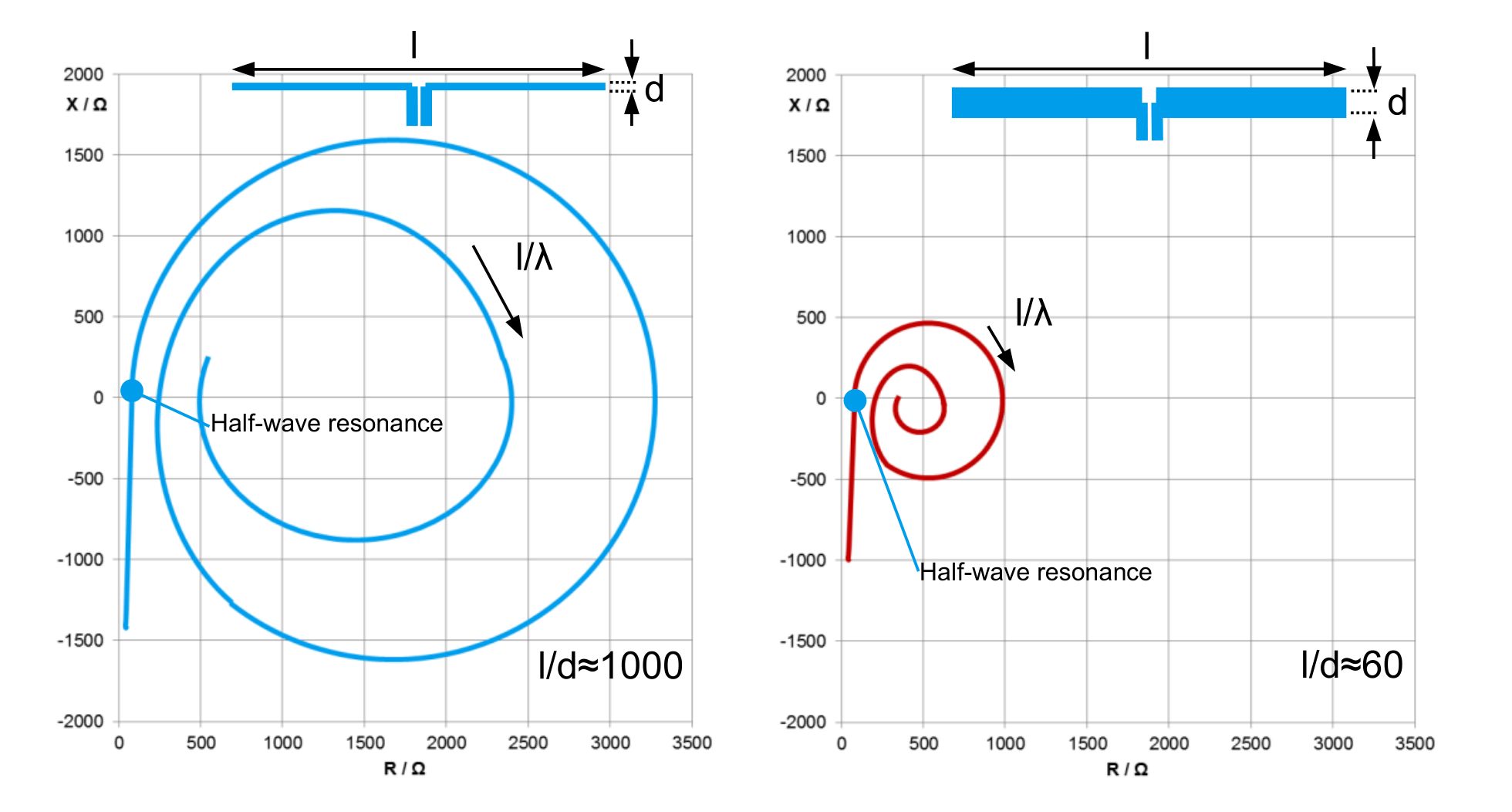Classification and Selection of RF Antennas 🚧
Antenna Classification
- Half-Wave Dipole Antenna
- Monopole Antenna
- Directional Antenna
- Log-Periodic Dipole Array Antenna (LPDA)
- Active Antenna
Half-Wave Dipole Antenna
The dipole antenna is the most fundamental form of an antenna, with the half-wave (tuned) dipole antenna being the most representative. Its total length is slightly less than half a wavelength, and its input impedance at resonance generally falls between 50 to 70 ohms (specifically depending on the ratio of its length to diameter). Therefore, it is well-matched to transmission lines and loads with a standard 50-ohm impedance. The current distribution on the dipole antenna is as shown by the red line in the following image (approximately a sine wave):

The radiation pattern of the dipole antenna was discussed in the previous article. The radiation pattern in the reference plane (E-plane) looks like the digit "8," while the radiation pattern in the plane perpendicular to the axis (H-plane) appears to be relatively uniform and circular:

The limitation of the half-wave dipole antenna is that it operates efficiently at specific frequencies. This is because the antenna's input impedance largely depends on the ratio of the antenna's length to the wavelength. As the antenna deviates further from the half-wave resonant frequency, impedance mismatch becomes more pronounced. The magnitude of impedance variation decreases as the ratio of length to diameter becomes smaller, as shown in the following image:

References and Acknowledgments
- "Antenna Basics_Rohde&Schwarz"
- "How to Choose Antennas for Microwave Systems_Rohde&Schwarz"
- Easily Understandable! After Reading This, You'll Be Half an Antenna Expert
Original: https://wiki-power.com/ This post is protected by CC BY-NC-SA 4.0 agreement, should be reproduced with attribution.
This post is translated using ChatGPT, please feedback if any omissions.